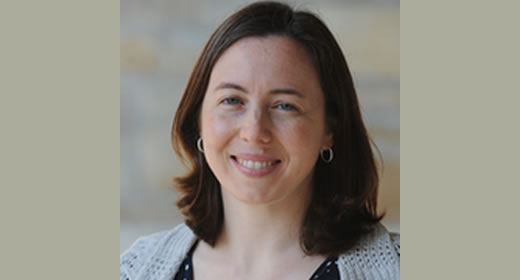
The stress of a divorce can be tough on anyone, but a recent study by Ford School doctoral student Bridget Lavelle suggests the split presents a specific health challenge to women: staying insured.
Lavelle reviewed 11 years of U.S. Census Bureau data and discovered that women face a substantial risk of becoming uninsured following a divorce. Middle-class women previously covered through their ex-spouse's employer are most at risk.
Lavelle found that many divorcing women lose coverage for at least some period of time. Seventeen percent of women insured while married lacked coverage six months after divorce. Many of these women remained uninsured for nearly two years after the divorce. Data for each subject covered only four years, so it's possible that some women remain uninsured for an even longer duration.
"The most surprising finding is that it's not a short-term shock to health insurance," Lavelle said. "It appears to be a longer-term problem."
Despite nearly 850,000 divorces in the United States annually, the impact of divorce on health care coverage has been remarkably absent from the national conversation on topics like the 2010 Patient Protection and Affordable Care Act (PPACA). Lavelle's work is starting to change that, garnering attention from National Public Radio and other media.
"People are interested because it hasn't been talked about," Lavelle said. "This is a topic that's been totally silent during the past several years of discussion about how the health care system is set up and the type of changes we need to see."
Middle class = most vulnerable
Lavelle looked at data from the Census Bureau's Survey of Income and Program Participation between 1996 and 2007, which allowed her to follow three representative groups of women age 26 to 64 over a four-year period.
"We basically have a monthly calendar of health insurance and marital status and we can look at how they change in parallel to one another," she said.
The Census data also included employment status, which plays a key role as well. Women who work full-time, and who have been employed in the same job for longer than six months, are largely protected. The same holds true for college-educated women.
Paradoxically, women with low levels of education attainment also show minimal signs of losing coverage.
"Part of that is because fewer had coverage to begin with," Lavelle said, "but they're also more likely to transition onto Medicaid," the government's health insurance provider for low-income families. The percentage of women covered by public insurance increased from six percent before divorce to 10 percent after.
The most vulnerable women are those insured as dependents on their husband's employer-provided insurance policy. Although these women frequently work, their employers may not provide insurance or their income is not sufficient, absent the ex-spouse's income, to afford their portion of premiums for employer-based coverage or to purchase private insurance. Lavelle found that one in four women dependent on their ex-spouse's policy will become uninsured within six months of divorce.
The remedies currently available to these middle-class women are sparse. Even the federal COBRA law—which allows individuals to maintain the coverage they had under an employer for up to 18 months after a job loss or 36 months following a divorce—is rarely feasible. Employers no longer subsidize the coverage, leaving the individual to pay the entire premium. Lavelle found that women who are employed but not insured through their employer can struggle to pay these premiums.
"COBRA is more than $400 (a month) for individual coverage so after you've just taken a major hit to your finances, that's not very affordable," she said.
States, PPACA offer some solutions
Lavelle said some states—Massachusetts, Rhode Island, and New Hampshire—have passed laws to help people maintain health insurance following a divorce. The laws require many employers to continue subsidizing dependent coverage for ex-spouses even after the divorce, which keeps premium rates affordable.
Lavelle is not aware of studies that have examined the effectiveness of these laws, but following her interview on NPR she received an email from a divorce lawyer in Boston who strongly endorsed the Massachusetts law.
"It sounds like it is helping a lot of people, but I can't say for sure from the data," Lavelle said.
On the national level, some provisions of PPACA, signed by President Obama in March 2010, would broaden coverage options for women. Medicaid eligibility would be expanded to cover more low-income individuals above the poverty line, as well as more women who are not mothers. "Most women without children can't get (Medicaid) right now, regardless of their income level, so that's going to be a big change," Lavelle said. PPACA would also prohibit private insurers from denying women coverage for preexisting conditions, as they could before the law.
The Supreme Court was deliberating the law's constitutionality at press time. If upheld, many key provisions would not go into effect until 2014. While Lavelle is optimistic that the Affordable Care Act would address many current shortcomings, she remains discouraged that the connection between divorce and health coverage continues to be overlooked.
"I think it's something people sort of connect with," she said. "When I mention my research topic, many women I meet say that maintaining health insurance coverage after divorce was difficult or impossible for themselves or a sister or friend."
Nothing illustrates this oversight like the White House's own document promoting how PPACA would benefit women. It states women would remain insured through exchanges even if "they lose their jobs, switch jobs, move, or become sick."
"To me, the omission of divorce is striking," Lavelle said. "I guess word hasn't gotten out yet that this is a problem."
Consider the word out.
Below is a formatted version of this article from State & Hill, the magazine of the Ford School. View the entire Spring 2012 State & Hill here.